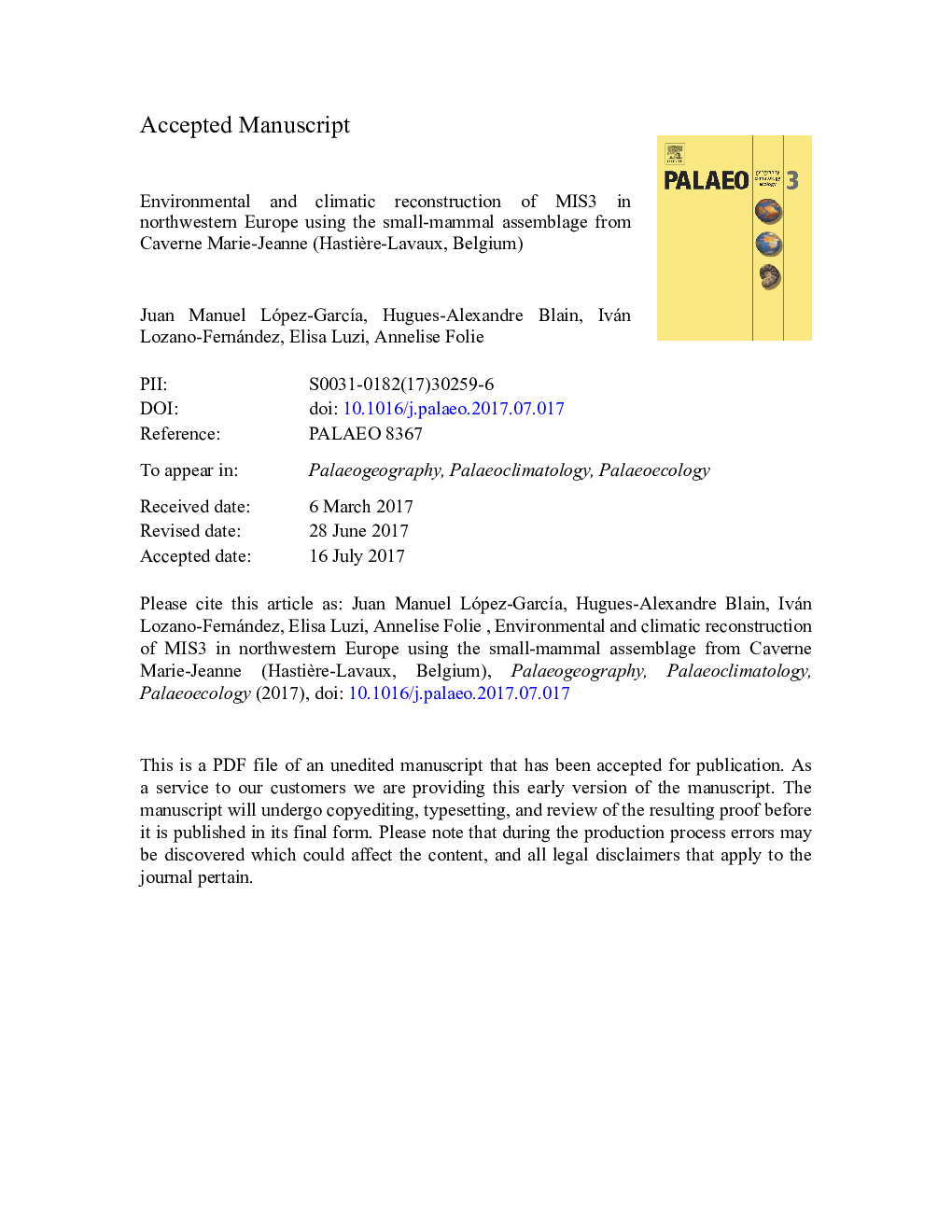| Article ID | Journal | Published Year | Pages | File Type |
|---|---|---|---|---|
| 8868698 | Palaeogeography, Palaeoclimatology, Palaeoecology | 2017 | 44 Pages |
Abstract
Marine Isotope Stage 3 (MIS 3, ca. 60-30 ka) is characterized by dynamic alternations of forest expansion with semi-arid area expansion in accordance with the warming and cooling, respectively, of the sea-surface temperatures in Northern Europe. It was in this context of rapid fluctuations that the terrestrial sequence of Caverne Marie-Jeanne (Hastière-Lavaux, Belgium) in northwestern Europe was formed. The habitat weighting method and the bioclimatic model, as well as the Simpson diversity index, are applied to the small-mammal assemblage of Caverne Marie-Jeanne in order to reconstruct the environmental and climatic fluctuations that are reflected in the MIS 3 sequence of the cave. Revision of the small-mammal fossil material deposited in the collections of the Royal Belgian Institute of Natural Sciences (RBINS, Brussels, Belgium) shows that the lower layers (6 to 4) of the cave, pertaining to MIS 3 (ca. 50-40 ka), underwent cold, dry environmental and climatic conditions for these layers. This is indicated by temperatures lower than at present and precipitation slightly higher than at present, together with an environment dominated by open woodland formations and open dry meadows. Our results are consistent with the available chronological, large-mammal, herpetofaunal and mollusc datasets for this lower part of the sequence. They are also consistent with regional loess studies in Belgium and with previous work performed on small mammals from MIS 3 in Belgium and elsewhere in Europe.
Related Topics
Physical Sciences and Engineering
Earth and Planetary Sciences
Earth-Surface Processes
Authors
Juan Manuel López-GarcÃa, Hugues-Alexandre Blain, Iván Lozano-Fernández, Elisa Luzi, Annelise Folie,
